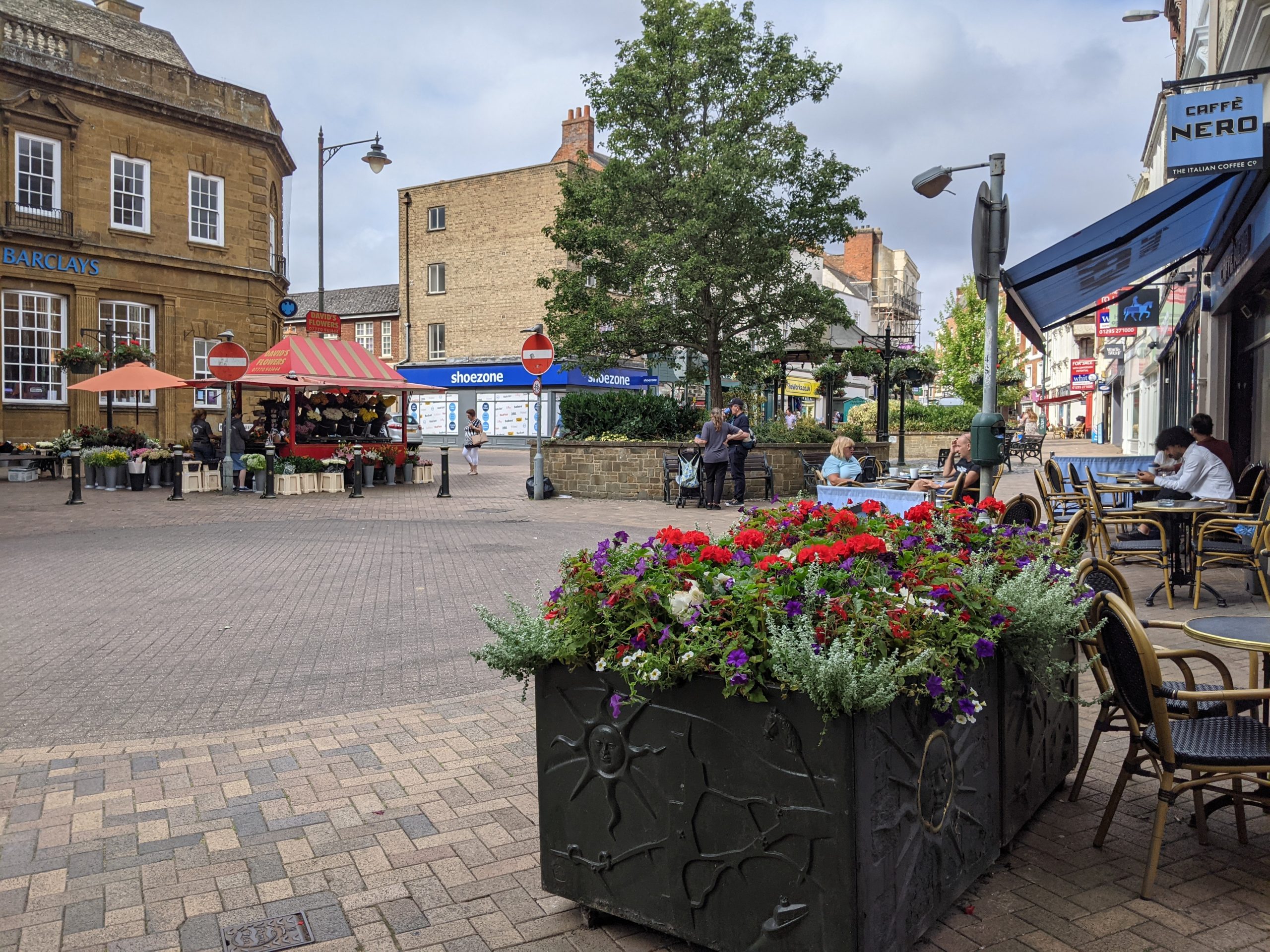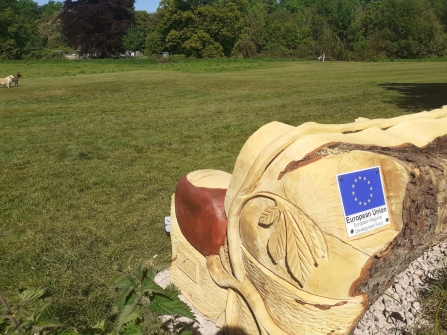Key Opportunity 3: Growing green towns in Cherwell
Existing high street greening in centre of Banbury

Purpose
Create healthier, walkable towns and attract investment by greening the places where people live, work and visit.
Description
Urban greening means maximising ‘green’ features in town centres and neighbourhoods. This supports a move to more compact, walkable, and “wild” local neighbourhoods.
Greener towns can help to create a healthier environment for local communities. However, it can also improve the visual appeal of high streets – in turn attracting investment and supporting local businesses.
Oxfordshire’s Street Design Guide (2021) defines high quality good streets and spaces as streets which act as attractive outdoor spaces including high quality green and blue landscape infrastructure. It also provides guidance on street space allocations and how to claim space back for local communities to then create green space, rain gardens, seating and growing or local areas of play.
Urban greening features can include:
- High quality green spaces, in the right places (e.g. removal of parking and replacement with community-led pocket parks.)
- Planting trees and shrubs along key routes to connect paths, streets and green spaces.
- Introducing green roofs.
- Living walls and other green elements to retrofit buildings.
- Integrating more seating and bike storage into the public realm – combining with green features where possible.
- Targeting nature-rich Sustainable Urban Drainage (SuDS) features (see Key Opportunity 1).
These initiatives are likely to involve close collaboration with transport planning teams – in order to shape a more pedestrian and bicycle-friendly public realm, using improved pedestrian crossings, side street treatments, junctions and signage.
The UK’s Manual for Streets sets out design principles to bring about a transformation in the quality of our streets, for a range of users. It notes that “streets are the arteries of our communities” rather than simply for getting people from A to B. It highlights the role of GBI within good street design – space for planting can be integrated into layout and building designs and can be located on private or public land, including the highway.
GBI can add value in “softening the urban street scene”, creates visual and sensory interest and improve both air quality and habitats for wildlife. From an urban design perspective, planting can also provide shade, shelter, privacy, spatial containment and separation – or as a ‘gateway feature’.
Why is this important for Cherwell?
As highlighted in the Place pages of this Strategy, Cherwell’s town centres are facing a number of challenges in terms of vitality and quality of place. The dominance of the private car also poses a challenge. However, this also means there is an opportunity for a GBI-led approach to diversifying uses in Cherwell’s towns and local centres.
Providing more nature-rich areas at the heart of towns (and the removal of areas of hard surfacing) will also help to address flood risk challenges related to surface water flooding – and the knock-on impacts on water quality in the District.
Case studies: Gloucester Wild Towns and town centre linear parks
Bench overlooking new meadow as part of Wild Towns project (Image source: Gloucestershire Wildlife Trust)

The Gloucestershire Wild Towns project is led by the Wildlife Trust and seeks to create, connect and enhance green spaces across seven Gloucestershire towns. Funding came from the European Regional Development Fund (ERDF) and a number of other funders. Interventions included creating wildflower meadows, managing woodland, creating wetlands, planting native trees and shrubs and creating refuges for species.
While not yet implemented, a number of other town centres have been exploring new models for GBI-led town centre regeneration. In 2020 Oldham Council started to focus its town centre regeneration plans around a new linear park, surrounded by new homes. Similarly, Stockton-on-Tees Council plans to demolish buildings in areas of empty shops to make way from a riverside park featuring public art work.
Further guidance
- Urban greening features, particularly street trees, can require careful planning for ongoing maintenance within an urban landscape. The urban greening feature should be selected to suit the budget and stewardship options.
- Trusting community groups with stewardship of small-scale greening features can create a valuable sense of ownership.
Key delivery partners
- Town centre regeneration teams within Cherwell District Council (CDC).
- Developers of town centre housing, Business Improvement Districts (BIDs) and local businesses.
- Parish/town councils.
Potential delivery mechanisms
- Integration into GBI-led high street regeneration programmes.
- Designed into new development (see Guidance for new development).
- Community asset transfers of GBI assets.
- Alternative management structures for parks and green space.
- Business Improvement Districts (BIDs).